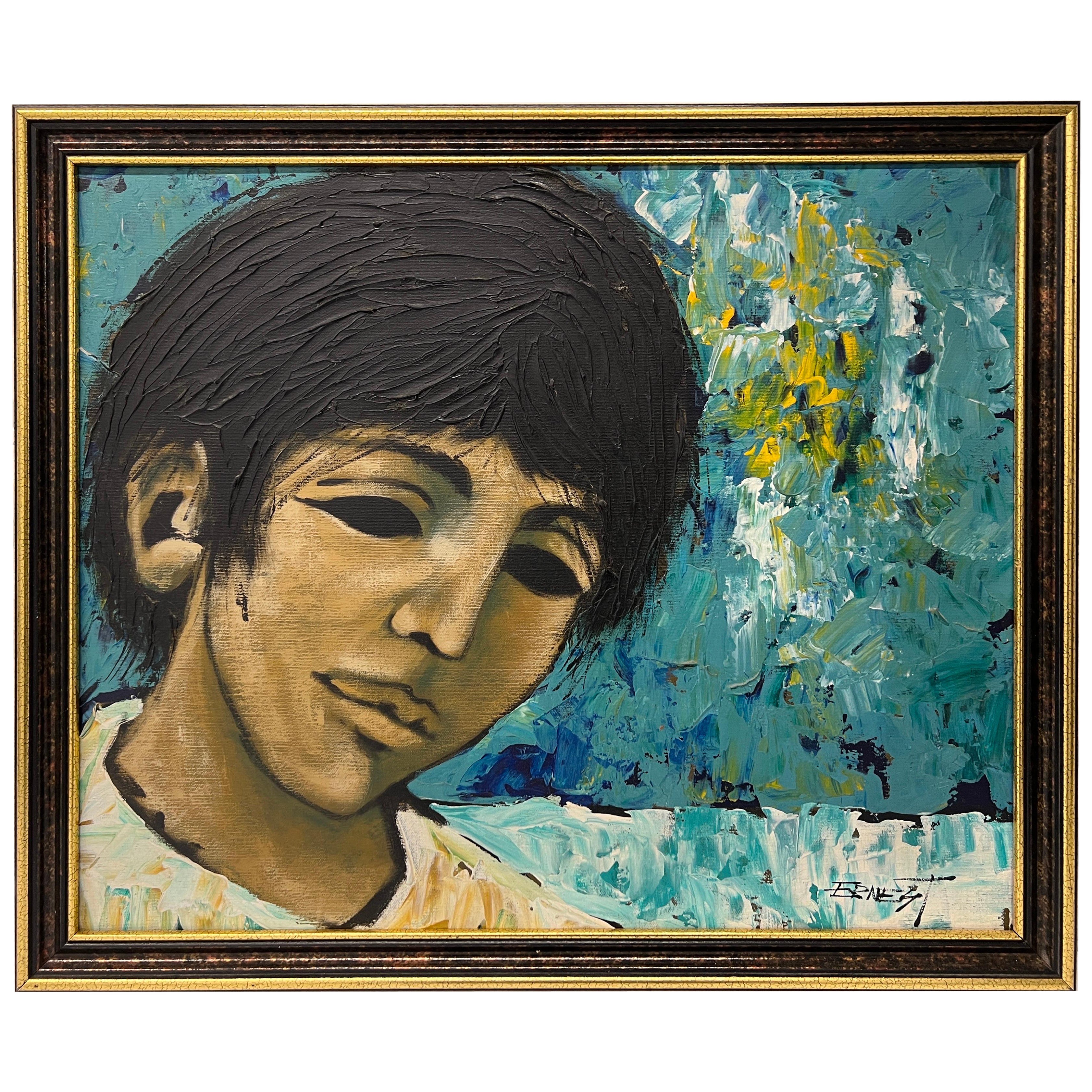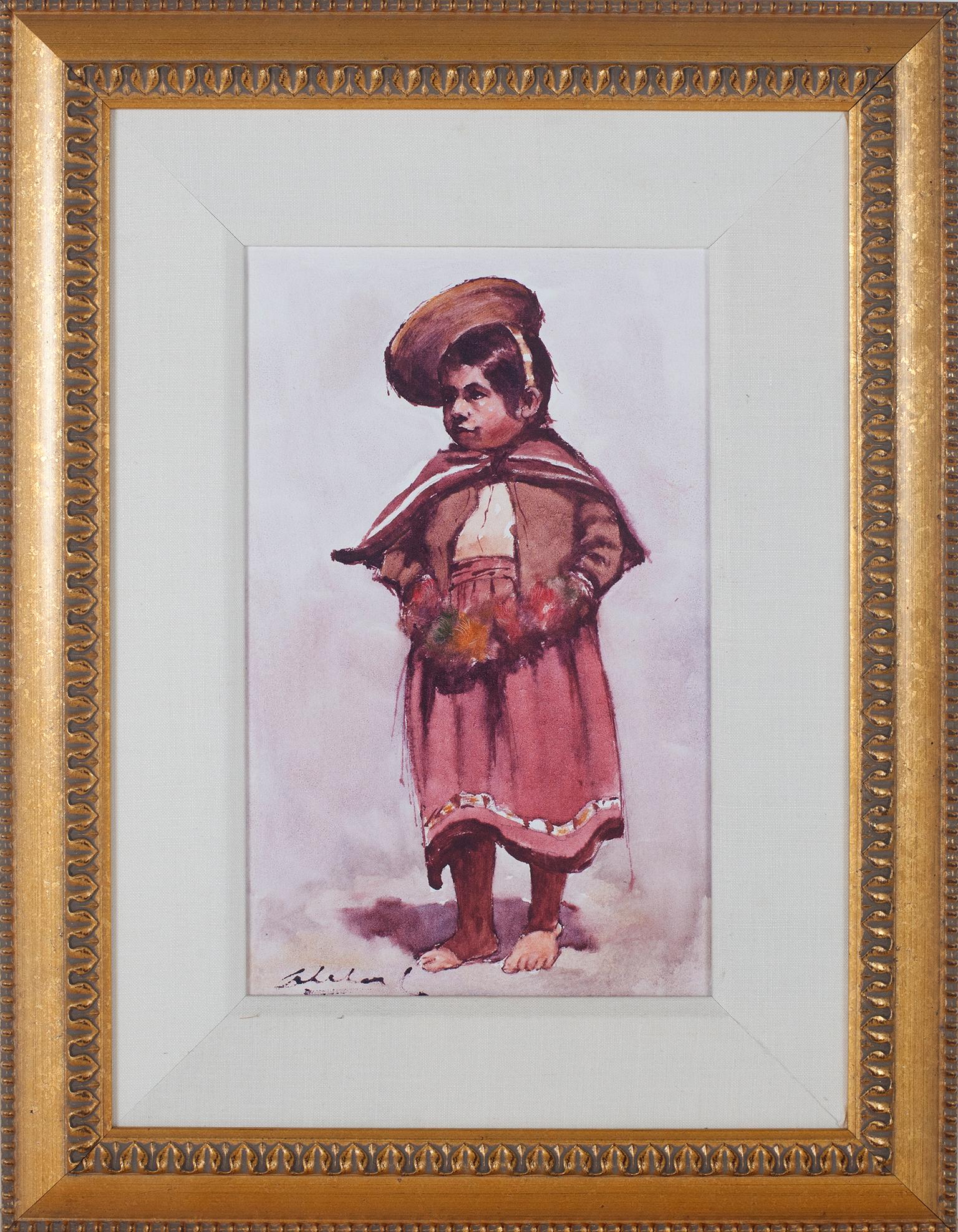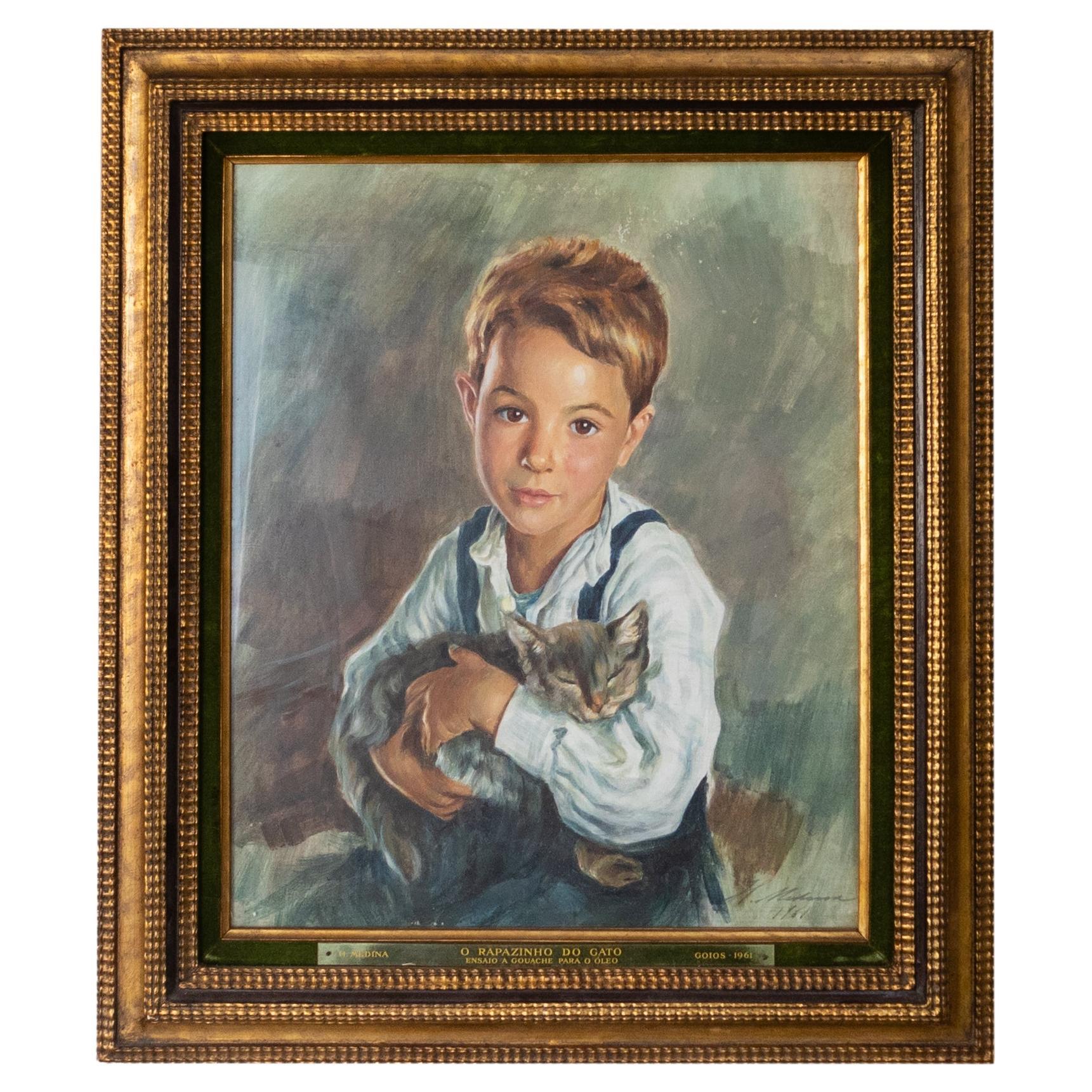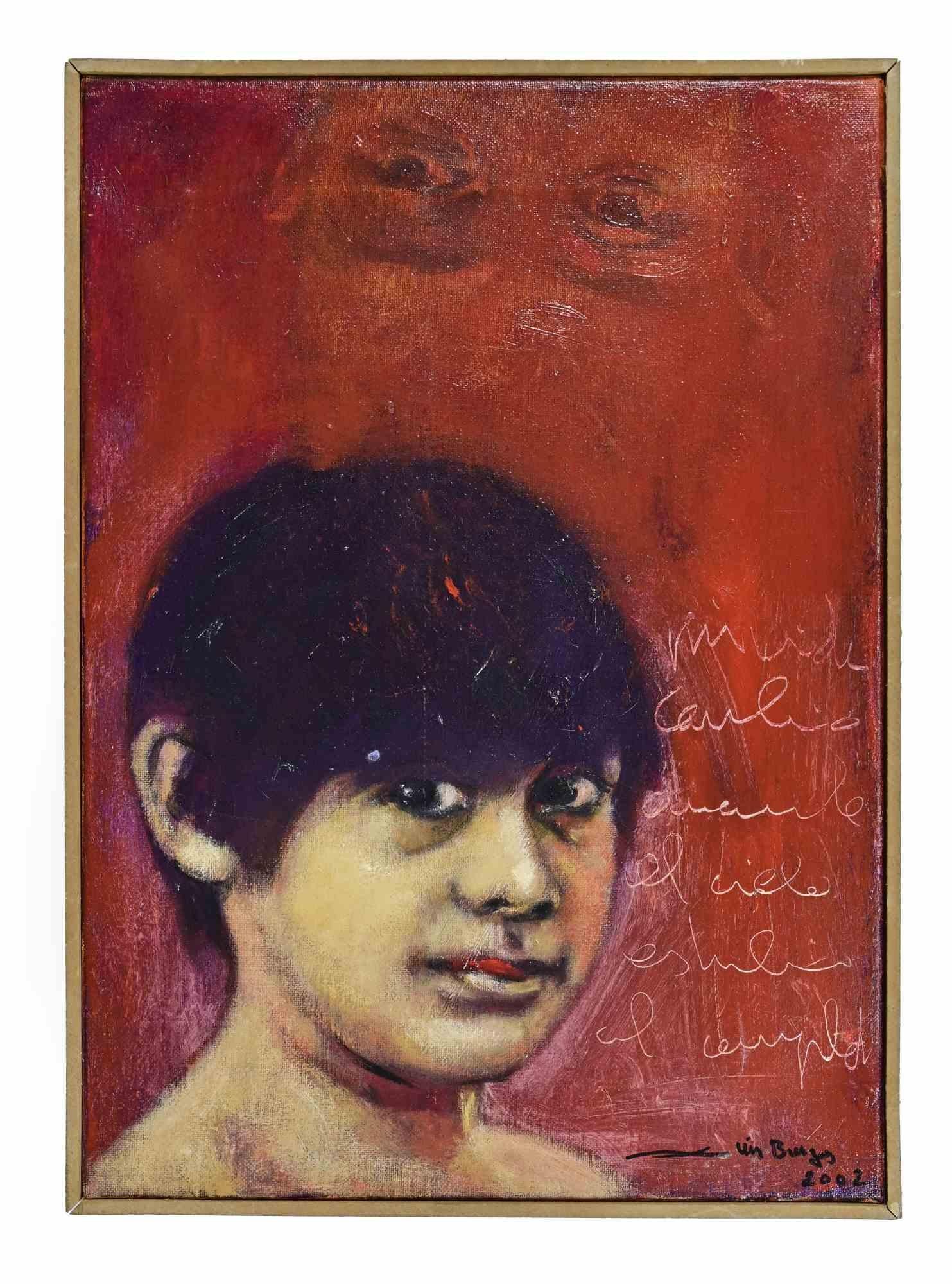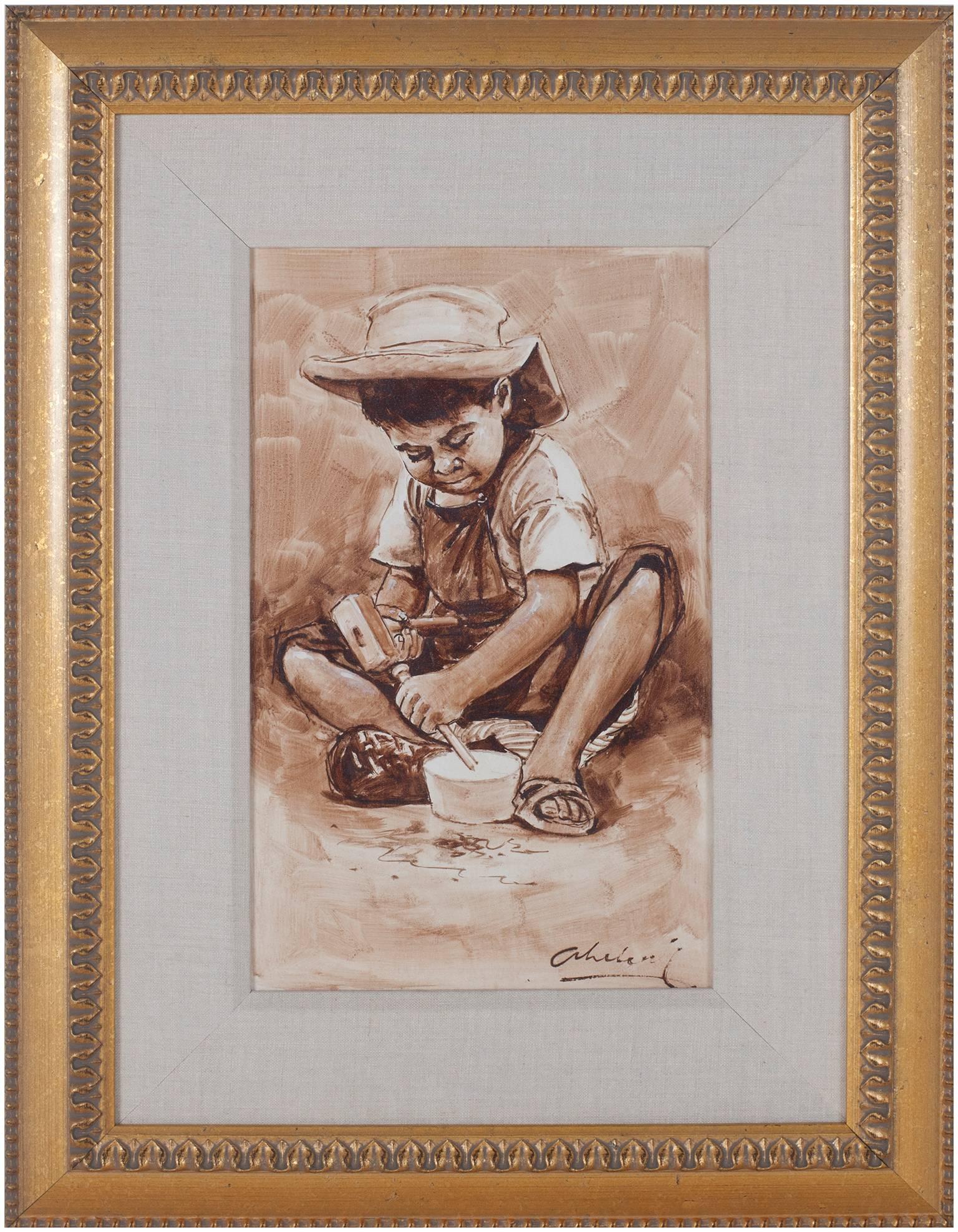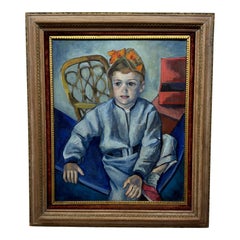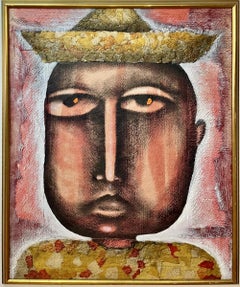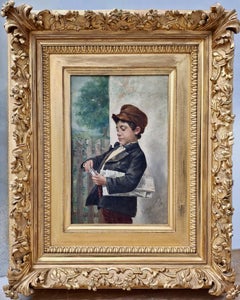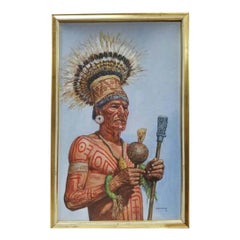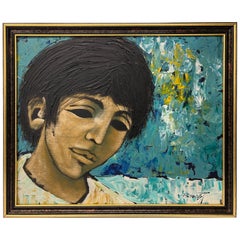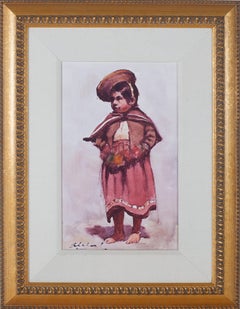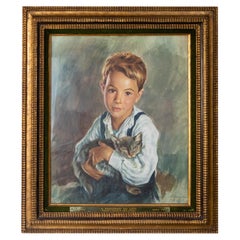Items Similar to Jesus Ortiz Tajonar (1919-1990) Boy W/Papier-Mâché Animal Warrior Mask
Want more images or videos?
Request additional images or videos from the seller
1 of 12
J. Ortiz Tajonar Jesus Ortiz Tajonar (1919-1990) Boy W/Papier-Mâché Animal Warrior Mask
$1,475
£1,112.30
€1,286.42
CA$2,069.42
A$2,300.29
CHF 1,205.76
MX$28,092.05
NOK 15,053.22
SEK 14,162.28
DKK 9,601.50
About the Item
Jesus Ortiz Tajonar (1919-1990) Mexican Boy with Papier-Mâché Animal Warrior Mask
c.1950s
Fantastic mid century modern oil painting by listed Mexican artist Jesus Ortiz Tajonar.
Works by J. Ortiz Tajonar seldom appear on the market. This is an excellent opportunity to acquire a painting by this Mexican Master.
The painting is of a young child holding a papier-mâché animal mask.
Original oil on canvas. Dimensions 22" x 29.75". The distressed period frame measures 27" x 35".
The frame shows some chipping and loss to some of the velvet lining of the mat.
Signed lower left. Very good vintage condition. Would benefit from a light cleaning.
About the Seller
4.9
Gold Seller
Premium sellers maintaining a 4.3+ rating and 24-hour response times
1stDibs seller since 2020
542 sales on 1stDibs
Typical response time: 6 hours
- ShippingRetrieving quote...Shipping from: San Francisco, CA
- Return Policy
Authenticity Guarantee
In the unlikely event there’s an issue with an item’s authenticity, contact us within 1 year for a full refund. DetailsMoney-Back Guarantee
If your item is not as described, is damaged in transit, or does not arrive, contact us within 7 days for a full refund. Details24-Hour Cancellation
You have a 24-hour grace period in which to reconsider your purchase, with no questions asked.Vetted Professional Sellers
Our world-class sellers must adhere to strict standards for service and quality, maintaining the integrity of our listings.Price-Match Guarantee
If you find that a seller listed the same item for a lower price elsewhere, we’ll match it.Trusted Global Delivery
Our best-in-class carrier network provides specialized shipping options worldwide, including custom delivery.More From This Seller
View AllPortrait Painting of Young Boy
By Virginia Sevier Rogers
Located in San Francisco, CA
Portrait painting of young boy by California listed artist Virginia Sevier Rogers
1952
Oil on Canvas
Signed and dated lower right
22" W x 27" H unframed, 30" W x 35" H framed
Category
Mid-20th Century Modern Portrait Paintings
Materials
Oil
A Cubist Cuban Country Chico
Located in San Francisco, CA
You cannot pass this doleful young man without engaging. If you have traveled, you have met him in the streets of Latin America, of India, of Africa and even some parts of the U.S. H...
Category
Early 2000s Cubist Figurative Paintings
Materials
Canvas, Mixed Media
“The Newspaper Boy”
Located in San Francisco, CA
The classic hard luck, independent kid, maybe 8 or 10 years old here, selling the day’s papers out on the grubby streets of early 1900s New York City. He’s paused in a quiet spot, ap...
Category
Early 1900s American Realist Figurative Paintings
Materials
Canvas, Oil
Hubert Wackerman (1945-Active) Native American Portrait
Located in San Francisco, CA
Hubert Wackerman (1945-Active)
Beautiful Native American Portrait, 1978
Oil on canvas board
Unframed: 15" x 24"
Framed: 16.75" x 25.75"
Category
1970s Portrait Paintings
Materials
Oil
Eric Bancroft "The Warrior" Original Mixed Media Portrait c.1967
By Eric Bancroft
Located in San Francisco, CA
Eric Bancroft "The Warrior" Original Mixed Media Portrait c.1967
Original mixed media painting by noted California artist Eric Bancroft.
Created with oils and fibers on masonite. D...
Category
Mid-20th Century Abstract Mixed Media
Materials
Textile, Masonite, Oil
Agapito Labios Girl with Birds
By Agapito Labios
Located in San Francisco, CA
Agapito Labios: 1898-1996. Well, listed Mexican Painter, who painted in the primitive Mexican style. He is best known for his paintings of young girls with either an inside or outsid...
Category
Mid-20th Century Figurative Paintings
Materials
Oil
You May Also Like
Mid Century Spanish Oil Painting of A Young Boy - Signed Ernest
Located in Atlanta, GA
Spanish, 20th century.
A vintage oil painting depicting a young boy. The artist used a wonderful array of colors to accent the boy's profile. Signed to lower right.
Category
20th Century Spanish Mid-Century Modern Paintings
Materials
Canvas, Paint
$540 Sale Price
20% Off
Contemporary figurative oil painting Latino child subject red costume signed
By Abelardo Marquez Velazquez
Located in Milwaukee, WI
"Vestido Regional (Girl in Her Regional Costume)" is an original oil painting on canvas by Abelardo Marquez. The artist signed the piece lower left. This artwork features a young girl in a pink and purple...
Category
1990s Contemporary Figurative Paintings
Materials
Canvas, Oil
Mexican Boy with Bird
By Jose Maria de Servin
Located in Surfside, FL
The sweetness that characterizes the work of Mexican painter Jose Maria de Servin (1917-83) is a melancholy and placid one. While he worked in the most modern of styles, he adapted i...
Category
20th Century Figurative Paintings
Materials
Burlap, Oil
The Little Boy With the Cat by Henrique Medina, Portuguese School, 1961
By Henrique Medina
Located in Lisbon, PT
A striking gouache painting on canvas titled "O Rapazinho do Gato" (The Little Boy With the Cat) by Henrique Medina, signed and dated 1961, Portugsal.
This early study of one of Med...
Category
20th Century Portuguese Paintings
Materials
Canvas
$11,008 Sale Price
20% Off
Portrait of a Boy - Oil Paint by Luis Burgos - 2002
Located in Roma, IT
Oil on canvas realized by Luis Burgos in 2002.
Hand signed and dated.
Includes a contemporary wooden frame cm. 46.4x33.5.
Category
Early 2000s Contemporary Figurative Paintings
Materials
Canvas, Oil
"Nino Trabajador (Child Carving Wooden Bowl) - Ayacucho, " Oil on Canvas signed
By Abelardo Marquez Velazquez
Located in Milwaukee, WI
"Nino Trabajador (Child Carving Wooden Bowl) - Ayacucho" is an original oil painting by Abelardo Marquez. It depicts a boy carving a bowl out of wood. This painting was completed in ...
Category
1990s Contemporary Figurative Paintings
Materials
Canvas, Oil
More Ways To Browse
Papier Mache Art
Modern Jesus
Mexican Market
Modern Jesus Art
Mask Mexico
Velvet Painting Vintage
Mexican Boy Painting
Mexican Velvet
Papier Mache Animals
Mexican Papier
Papier Mache Mask
Animal Mask Vintage
Vintage Mexican Mask
Vintage Velvet Painting Mexico
Jesus Ortiz Tajonar Mexican
William S Schwartz
Dan Mccaw
E Anderson
